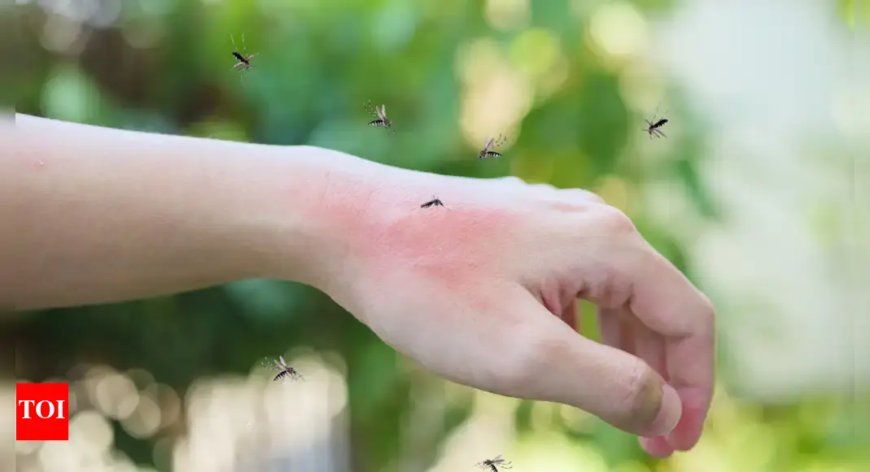Understanding Why Viral Fevers, Dengue, and Typhoid Increase in Monsoon Season
During monsoons in India, viral fevers, dengue, and typhoid cases surge due to factors like stagnant water, humidity, and poor sanitation. Learn how these diseases spread and how to prevent them effectively.

This scent-based preference, which remains consistent over time, could pave the way for more effective mosquito repellents and disease prevention.
(Inputs by Dr. Tushar Tayal, Consultant, Internal Medicine, CK Birla Hospital, Gurgaon.)
During each monsoon, one can clearly see an increase in the incidence of viral fevers, dengue, and typhoid in most regions of India. This peak seasonality is not merely coincidental but is due to the way weather, water, and hygiene interact during monsoons. The combination of stagnant water, humidity, and poor sanitation during monsoons is the ideal breeding ground for infections to spread and flourish.
Viral monsoon fevers are primarily due to seasonal viruses transmitted by air, contaminated hands, or droplets from an infected person. The humidity lowers our body's natural defence, and hence, viruses can easily infect us. These fevers may present with symptoms of fever, body pain, mild to high-grade fever, sore throat, and occasionally, the abdominal symptoms. As individuals remain indoors during rains, family or crowded settings close contact can spread it faster.
Dengue, a disease spread by mosquitoes, is also at its peak in monsoon season because breeding of mosquitoes is high. Aedes aegypti, the mosquito vector for dengue, breeds in clean stale water — which is often seen in buckets, thrown-away containers, flowerpots, or even clogged drains after rain. Urban environments with inadequate drainage and water stagnation are especially vulnerable.
The symptoms of dengue may initially begin with sudden high fever, severe headache, pain in the eyes behind them, muscle and joint pain, and rash on the skin. In severe instances, it may lead to life-threatening conditions such as dengue hemorrhagic fever.
Typhoid, however, is a water-borne bacterial infection with Salmonella typhi as the causative agent. It is transmitted through contaminated food and water, quite a problem during monsoons when pipelines carrying water tend to get mixed with sewage due to leaks or flooding. Unwashed vegetables, street food, and contaminated drinking water are usual sources. Typhoid fever is characterized by long-standing fever, weakness, pain in the abdomen, constipation or diarrhea, and rash on the skin in some cases.
The unifying factor among these diseases is lack of sanitation, waterlogging, and hygiene issues that get intensified during monsoon. Monsoon also witnesses increased consumption of outside food as well as street foods, which might be exposed to contaminated water or dealt with without good hygiene. Children, the elderly population, and those with pre-existing medical conditions are especially at risk.
These diseases can be prevented with simple yet effective measures. Don't drink unfiltered or uncovered water; always drink clean, boiled water if unsure about the origin. Don't let water pool in and around houses and prevent breeding of mosquitoes. Wear mosquito repellents and nets, particularly during early morning and evening when mosquitoes are active. Wash hands regularly and refrain from eating street food for the time being.
I also recommend not to neglect any fever during monsoons — early diagnosis and prompt treatment can avoid complications, particularly with dengue or typhoid. Building immunity through a well-balanced diet, drinking plenty of fluids, and proper rest also proves to be a great defense during this peak-risk season.
According to the source: Times of India.
What's Your Reaction?
 Like
0
Like
0
 Dislike
0
Dislike
0
 Love
0
Love
0
 Funny
0
Funny
0
 Angry
0
Angry
0
 Sad
0
Sad
0
 Wow
0
Wow
0



















































































































































































